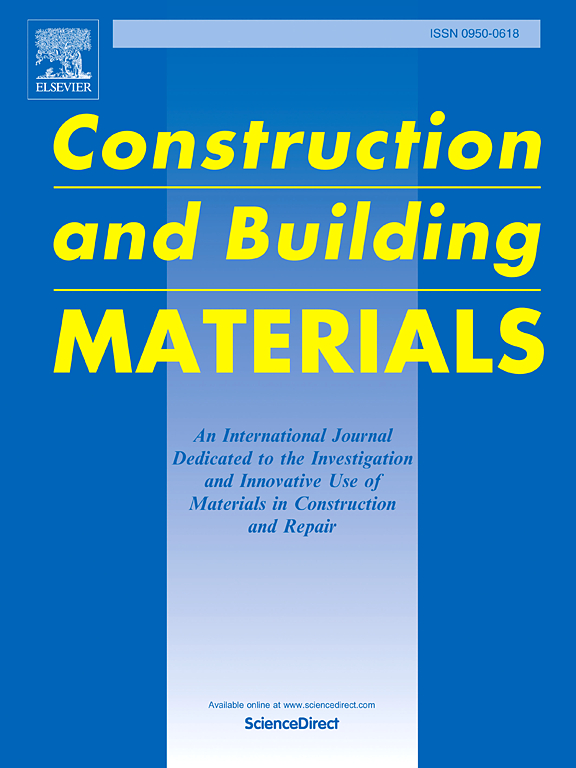Modelling and validating the time-temperature-ageing superposition principle in bitumen via molecular dynamics simulations
IF 7.4
1区 工程技术
Q1 CONSTRUCTION & BUILDING TECHNOLOGY
引用次数: 0
Abstract
The durability and performance of asphalt pavements are dominantly determined by the viscoelastic properties of bitumen. Time-temperature-ageing superposition principle (TTASP) theory can effectively reflect the effects of ageing and temperature on the viscoelastic properties of bitumen. However, obtaining the parameters of TTASP experimentally is time-consuming and challenging. Accurate and rapid acquisition of the parameters of TTASP is needed. In this paper, molecular dynamics (MD) simulations are used to explore the volumetric properties of bitumen, verifying the TTASP and obtaining its parameters from a molecular computational perspective. The bitumen molecules were developed in the MD according to the proportion of the lab-measured bitumen. The TTASP parameters were derived and calibrated via fractional free volume theory, considering the model size effect influenced by the number of molecules. The degree of bitumen oxidised ageing was investigated in the MD via the carbonyl groups. The proposed method effectively verifies the rationality of Time-temperature superposition principle (TTSP) and TTASP theories at nanoscale, accurately predicting volumetric and TTASP parameters. This precise and efficient approach can be used to forecasts the viscoelastic properties and ageing behaviour of bitumen, ensuring reliable predictions consistent with experimental results.
通过分子动力学模拟对沥青的时间-温度-老化叠加原理进行建模和验证
沥青路面的耐久性和性能在很大程度上取决于沥青的粘弹性。时间-温度-老化叠加原理(TTASP)理论能有效反映老化和温度对沥青粘弹性的影响。然而,通过实验获得TTASP的参数既耗时又具有挑战性。需要准确、快速地获取TTASP参数。本文采用分子动力学(MD)模拟方法探讨沥青的体积特性,从分子计算角度验证TTASP并获得其参数。根据实验室测得的沥青的比例,在MD中形成沥青分子。考虑分子数对模型尺寸效应的影响,利用分数自由体积理论推导并标定了TTASP参数。通过羰基研究了沥青在MD中的氧化老化程度。该方法有效地验证了时间-温度叠加原理(TTSP)和TTASP理论在纳米尺度上的合理性,准确地预测了体积和TTASP参数。这种精确有效的方法可用于预测沥青的粘弹性和老化特性,确保预测结果与实验结果一致。
本文章由计算机程序翻译,如有差异,请以英文原文为准。
求助全文
约1分钟内获得全文
求助全文
来源期刊

Construction and Building Materials
工程技术-材料科学:综合
CiteScore
13.80
自引率
21.60%
发文量
3632
审稿时长
82 days
期刊介绍:
Construction and Building Materials offers an international platform for sharing innovative and original research and development in the realm of construction and building materials, along with their practical applications in new projects and repair practices. The journal publishes a diverse array of pioneering research and application papers, detailing laboratory investigations and, to a limited extent, numerical analyses or reports on full-scale projects. Multi-part papers are discouraged.
Additionally, Construction and Building Materials features comprehensive case studies and insightful review articles that contribute to new insights in the field. Our focus is on papers related to construction materials, excluding those on structural engineering, geotechnics, and unbound highway layers. Covered materials and technologies encompass cement, concrete reinforcement, bricks and mortars, additives, corrosion technology, ceramics, timber, steel, polymers, glass fibers, recycled materials, bamboo, rammed earth, non-conventional building materials, bituminous materials, and applications in railway materials.
 求助内容:
求助内容: 应助结果提醒方式:
应助结果提醒方式:


